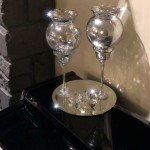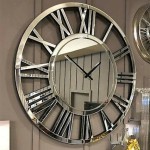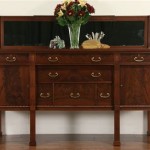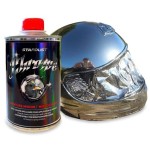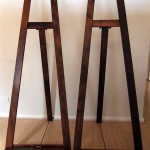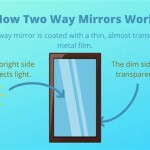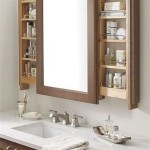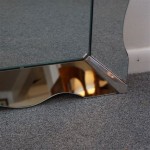How to Age Mirror Tiles
Mirror tiles offer a versatile and cost-effective way to enhance a space. However, their modern, reflective surface may not always complement a design aesthetic seeking a vintage or antique feel. Several techniques can effectively age mirror tiles, creating an appearance of weathered elegance and historic charm. This article explores various methods, from chemical treatments to physical distressing, enabling one to achieve the desired level of antiquing.
Before embarking on any aging process, careful preparation is essential. Thorough cleaning is crucial. This removes any dust, fingerprints, or residue that might interfere with the aging process or create uneven results. A gentle glass cleaner and a soft, lint-free cloth are recommended. The tiles should then be rinsed with clean water and dried completely. Protecting the surrounding work area with drop cloths or newspapers is advisable, as some aging techniques can be messy.
One of the most common methods for aging mirror tiles involves the application of etching cream. Etching cream contains hydrofluoric acid, a powerful chemical that etches the surface of the glass, creating a frosted, opaque appearance. This method offers significant control over the aging process, allowing for subtle frosting or a more heavily aged look. When using etching cream, it's crucial to wear appropriate safety gear, including gloves and eye protection. Applying the cream evenly with a brush, following the manufacturer's instructions regarding application time, is essential for consistent results. After the desired effect is achieved, the cream should be thoroughly rinsed away with water.
Another chemical aging technique utilizes muriatic acid, a highly corrosive substance requiring extreme caution during handling. Muriatic acid creates a more dramatic, pitted effect compared to etching cream. This method is best suited for creating a heavily aged, almost corroded appearance. Diluting the acid according to the manufacturer's instructions is crucial. Applying the diluted acid to the mirror tiles with a brush or spray bottle, allowing it to react for a specific time, achieves the desired effect. Neutralizing the acid with a baking soda solution before rinsing is essential to stop the reaction and prevent further etching. Due to the hazardous nature of muriatic acid, this method should be performed in a well-ventilated area, wearing appropriate safety equipment.
For a more subtle aged effect, one can employ a combination of paint and glazing techniques. Applying a base coat of dark paint, such as black or deep brown, followed by a lighter, contrasting top coat creates a layered appearance. Once the top coat dries, sanding or distressing techniques can reveal portions of the underlying dark paint, mimicking the wear and tear of time. Glazing mediums can also be employed to create a translucent, aged patina over the painted surface. Experimenting with different paint colors and glazing techniques allows for a wide range of aged effects.
Physical distressing techniques can also effectively age mirror tiles. Creating small cracks or chips in the tile's edges using a hammer and a small chisel can simulate natural wear. Sandblasting the surface of the mirror with fine-grit abrasive material creates a subtly frosted, aged appearance. These methods require practice and control to avoid excessive damage and achieve the desired level of distress. It is recommended to practice on spare tiles before working on the intended project pieces.
A combination of chemical and physical distressing methods can be employed to achieve highly realistic aged effects. For example, one could first etch the mirror surface with etching cream to create a frosted base. Then, applying a layer of dark paint followed by light distressing and glazing could enhance the aged appearance. The specific combination of techniques depends on the desired aesthetic and the level of aging one wishes to achieve.
Mirror mastic, a specialized adhesive used for adhering mirror tiles, can also be employed in the aging process. Applying the mastic unevenly to the back of the tiles before mounting them can create subtle distortions in the reflection, further enhancing the aged appearance. This method is particularly effective when combined with other aging techniques, such as painting or distressing.
After completing the aging process, sealing the tiles is important to protect the aged finish and enhance durability. Applying a clear sealant, such as varnish or lacquer, provides a protective layer against moisture and other environmental factors. Selecting a sealant appropriate for the chosen aging technique is vital. Certain sealants may react negatively with specific chemicals or finishes.
Experimentation is key to achieving desirable results when aging mirror tiles. Testing different techniques on spare tiles before working on the final project allows one to refine the process and achieve the desired level of antiquing. Careful consideration of the overall design aesthetic and the desired level of aging is crucial for achieving a cohesive and visually appealing final product.

How To Antique A Mirror Easy No Scratching The Navage Patch

How To Antique Mirror Using Paint Stripper And Bleach Decor Adventures

How To Antique A Mirror From The Front With Paint Average But Inspired

How To Age Mirror Aged Diy Antique

How To Antique Mirror Using Paint Stripper And Bleach Decor Adventures

How To Antique Mirror Using Paint Stripper And Bleach Decor Adventures

Aged Foxed Antique Distressed Mirror Tile Oxford Composite

How To Antique Mirror Using Paint Stripper And Bleach Decor Adventures

How To Antique A Mirror Tutorial Jenna Sue Design

How To Antique Mirror Using Paint Stripper And Bleach Decor Adventures

